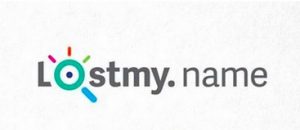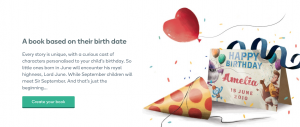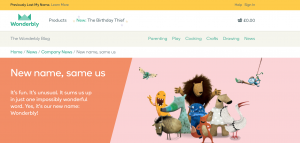
 I noted with interest the decision of brilliant book publisher Lost My Name to loose their own name: the company is now called Wonderbly, as announced here.
I noted with interest the decision of brilliant book publisher Lost My Name to loose their own name: the company is now called Wonderbly, as announced here.
Wonderbly harnesses digital technology to create personalised books for children, including The Little Girl (or Boy) Who Lost Her (or His)Name where the story differs depending on the letters in the child’s name, as I posted on here.
Changing name is a huge decision with some serious risks. Time and money has been invested in making the original name stand for something and there is a risk that some of this equity gets lost in the change. The name change also involves significant expenditure to create, design and communicate the new name to consumers, customers, employees and stakeholders.
So, when is such a brand name change justified? And how to maximise the chances of success?
1. When should we change name?
In some cases a name change is forced on a company. When Andersen Consulting separated from its parent company it had to lose the Andersen name and re-named itself accenture, for example.

The other reason to change brand name is fit with your brand and business strategy. In the case of Lost My Name, the company started life with a single book about a a little child who lost their name. The brand name was super simple and clear: the product was the brand was the product. In the words of the Ronseal slogan, “It does what it says on the tin“.
However, as the company grew it started to create books personalised based on things other than names, including children’s homes, their birthdays and their favourite foods. Lost My Name was out of sync with a brand now focused on creating “Extraordinarily personalised, wonderful books about all kinds of things“. In contrast, Wonderbly is less descriptive and much more open, providing flexibility for future product range expansion.
Another example of naming changing to fit with business strategy is the change of ParkAtMyHouse.com to Justpark.com that I posted on here. This also reflected a change in service offering: providing parking places not only at peoples’ houses, but also in company car parks, churches, schools and hotels.

2. Getting the name right
Once the big decision to change name is taken, how to evaluate the different options that come out of a name creation process? I suggest using three key criteria:
Ownability: first of all, can you own the name in the markets where you operate or buy it from the existing owner? This sounds mundane but is critical. Its no good coming up with a new name if you can’t register it and the internet domain name. The difficulty of creating a totally new and protectable name is a key reason to only make such a change if you really have to, as discussed above.
Memorabilty: A name needs to be easy to memorise and recall at the moment of truth when someone is choosing what to buy. This is why a name should be two to three syllables long, as is the case with Wonderbly. Any longer than this and people create their own shorthand for your brand name. Most people ask for “A Coke”, not “A Coca-Cola”, for example.
Personality: The third criteria is for a brand name to evoke the right feeling. This is down to the look and sound of the word used, and is where the ‘alchemy’ of brand naming comes in. The Wonderbly does feel friendly and child-like to me, which is good. I like the story behind the name’s origins. Most people won’t get this story unless they bother read the company’s blog, but that’s OK: “It’s a combination of Wonder and Impossibly, because (we like to think) we help you to make impossibly personalised books that bring wonder into children’s lives.”
3. Migrate your customers
People sometimes talk about the need for a brand migration program to manage a name change. However, the real issue is not migrating the brand but rather migrating customers. How do you ensure that as many of your existing customers carry on buying your brand after the name change?
Visibility is the first challenge: make sure people find your brand as quickly and easily as possible, with minimal added ‘friction’. Lost My Name and ParkAtMyHouse.com both has a big advantage of being online brands. They are able to re-direct people to the new, re-branded website when people type in the brandname. This is much harder for consumer goods brands who have to help people find the brand amongst the clutter and noise of the supermarket shelf.
The second challenge is reassurance: give people the confidence to go ahead and purchase, safe in the knowledge that although the name has changed the product or service is the same or, ideally, even better than before. Lost My Name have done this well, with a permanent link at the top of the webpage next to the new name. There is also a link to the blogpost explaining the change. I really like how the name change has been announced in line with the brand’s friendly, chatty character: “Muhammed Ali did it. So did Elton John. And Katy Perry. And now, we’ve done it too. Done what? Changed our name, that’s what.”

In conclusion, changing brand name is a complex, costly and potentially risky. You should only do it if you have to, or if your current name is holding you back from effectively executing your business strategy. If you do change name, follow the approach taken by Lost My Name. Select a short, memorable and protectable name that evokes your brand personality and then migrate customers by executing the change in a way that is visible and reassuring.
